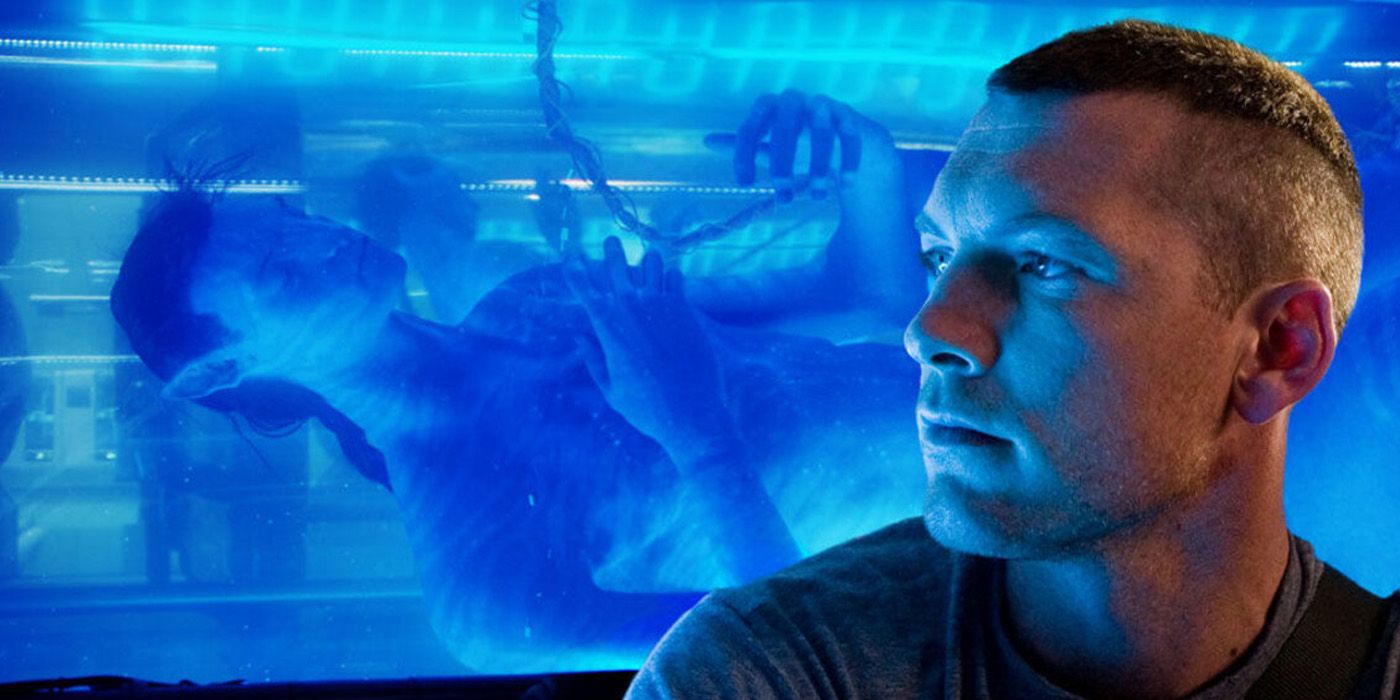Summary
The prolonged development of James Cameron’s Avatar sequels might seem outlandish, but a long development process isn’t unique to the franchise considering it took Cameron 38 years from his initial idea to seeing the world of Pandora on screen. As the release dates for Avatar 3, 4, and 5 extended to 2025-2031, combined with the 13-year gap between Avatar and Avatar: The Way of Water, the filmmaker’s perfectionist determinism has been established. When taking into consideration the lifetime of creative experiences and experimentation required to execute the first film, it’s no surprise that Cameron designated the original project as his “most personal film.”
In his 45-page sworn declaration of Avatar’s originality and inspirations written in defense of a 2012 lawsuit brought forward by former collaborator, Gerald Morawski, Cameron extensively charts the long creative journey to making Avatar. It covers the environmentalist themes, otherworldly visual design of glowing floras and hybrid creatures, cultural allegories to American colonialism, Jake Sully’s character arc as an outsider who requires technology to transcend his human form, and the central conflict around the military-industrial complex of the original film. The dedication and diligence found in Cameron’s world-building and research for Avatar stems from his personal passion for science, which drove him to major in physics in college as well as study astronomy and marine biology, asserting, “Since childhood, I have been extremely curious about the natural world.”
James Cameron First Imagined Pandora In The 11th Grade
As early as the 1960s, Cameron began outlining the distinctive features that would later characterize Avatar’s Pandora. While a high school junior, he drew up with a pen a drawing titled “Planet Flora,” which depicted small astronauts traversing along the “large, interconnected branches moving transversely” of a giant tree. “My intense curiosity about the natural world formed a positive feedback loop with my love of science fiction,” he later explained.
By portraying the humans as insignificant relative to the scale of the surrounding forest, James Cameron started leaning into classic science fiction themes of man vs. nature and technology vs. nature that would eventually encompass the world of Avatar. On Pandora, the natural world is beyond both human reach and grasp, and their destructive attempts to control the environment ultimately prove as futile as the path the humans journey across in the similarly enormous jungle of “Planet Flora.”
Jake’s Journey In Avatar Originated From A College Writing Project
In 1974, Cameron wrote a short film script titled Chrysalis, based on a short story he wrote a year prior titled Absence that focuses on the transcendental mental journey of a wheelchair user. Similar to Jake Sully’s progression as he inhabits and synchronizes with the avatar body as if it were his own, the man’s inner travels, involving “an alien landscape and a forest full of giant trees,” concludes with him standing up, fully healed in a mind-over-matter remedy. With Jake Sully’s story resolving as he fully adopts the avatar body to leave his human life behind, Cameron reinforces the concept of a person existing beyond their physical form after initially broaching the concept with Chrysalis and then subsequently experiencing the phenomenon in his life as an ROV pilot on his deep-sea expeditions.
Avatar’s Na’vi & Other Flora & Fauna Began With Cameron’s Xenogenesis Short
Later in the 1970s, Cameron co-wrote a short film titled Xenogenesis, following a group of desperate scientists searching for a new inhabitable planet for the human race, that presents a proto-Pandora planet known as the Luminous Planet. This Luminous Planet solidifies the next phase of Cameron’s environmentally-charged vision as he used all of his visual effects tools at his disposal for the time, including stop-motion animation. It helped to realize what his alien world would feel like, complete with “a vast network of interconnected, bioluminescent trees” including “willow-like trees with gossamer tendrils”, a “deadly environment” that “comes alive at night”, fan-lizards modeled after a Japanese fan that folds to reveal “a small, black lizard-like creature”, “glowing dandelion seeds”, “air sharks…with needle-like teeth”, “upthrust columns of rock”, and a cryo-capsule filled starship named Cosmos Kindred.
Small moments in Avatar such as Jake batting away wood sprites, the light ripples on the ground as he steps, or the wrapping tendrils of a tree during his and Neytiri’s kiss, to larger visual concepts such as battles utilizing mechanized suits or Jake’s final conversion to the Na’vi involving him being “overgrown with creeper-like tendrils” are all directly lifted or adapted from Xenogenesis. The Na’vi’s blue design can also trace its ancestry back to Xenogenesis, which details the genetically enhanced future of humanity on their new planet having skin the shade of a robin’s egg.
“I also became aware of and was influenced by the Gaia Hypothesis, as famously proposed by environmental scientist James Lovelock, which stated that the natural world functions as a single vast, self-regulating organism”
Beyond the visual elements, Avatar also iterated on the larger science fiction concepts from Xenogenesis such as the singular personification of the natural world which would later be embodied by Eywa in the franchise. Even the titular concept of controlling an avatar through a psionic link aided by a pod full of liquid can originally be found in Xenogenesis, where the main characters encounter a civilization that prefers to live in one, unified, virtual existence.
Many Avatar Elements Debuted In Cameron’s Unproduced Mother Screenplay
From 1980-1981, Cameron worked on a screenplay titled Mother (ironically titled E.T. before Spielberg started production on E.T. The Extraterrestrial) that followed an “interplanetary consortium called Triworld Development Corporation” and its pursuits to mine an uninhabitable planet for resources after Earth has been depleted. In Mother, Cameron began laying the foundation for the human antagonists of Avatar catalyzed by the military-industrial complex, with obvious parallels to how colonialism negatively impacted North and South America. The Company of Mother similarly employed genetically modified local lifeforms, known as “xenomorphs,” to work the mines that are controlled via psychic link with something called an “adept.” Running one of their research stations is a senior operator who would serve as inspiration for Sigourney Weaver’s Dr. Augustine. Mother saw Cameron begin to mix his previous science fiction concepts with the underlying external conflict that would both pragmatically apply the technology theorized and push the main characters to transcend to the natural world.
James Cameron Wrote The First Official Treatment For Avatar In 1995
Cameron began work on Avatar in 1995, comprehensively amassing all of his previous forays into science fiction by dovetailing the sentient world of Pandora, which expanded on his visual concepts from Xenogenesis, with the military-industrial complex colonialism that escaped from the scenes of Mother. Interestingly, he named the material at the heart of the conflict “unobtanium” because scientists had coined the term in the 1950s to describe a material that is extremely rare or impossible to exist. While the script was completed in 1996, the actual production of the Avatar movie would take Cameron nearly 15 years overall.
Cameron’s feature filmography also outlines a direct path towards the creation of Pandora. The Abyss played with concepts of military provocation of peaceful aliens and remote bodies, Aliens established the “grunts-in-space” aesthetic of the military, and Terminator 2 portrayed good-natured scientists who must sacrifice themselves to thwart the destructive path the military blazes. With the 2009 release of Avatar, Cameron had compiled 38 years of scientific curiosities, sci-fi world-building, and environmental and political themes to craft a film that fully reflects who he is as a storyteller and functions as a capstone of his previous work.
Source: THR











